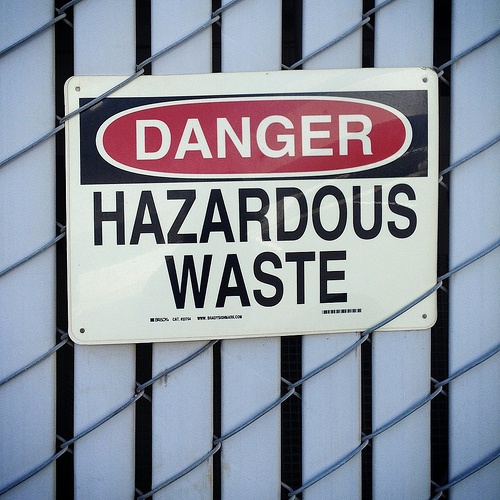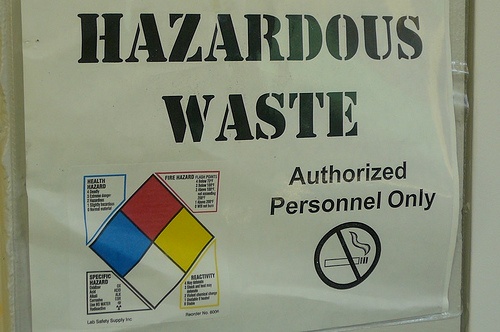The Occupational Safety and Health Administration (OSHA) requires most employers to prepare and maintain records of occupational injuries and illnesses (I&I Logs) as they occur. OSHA also requires employers to post an annual I&I Summary in each “establishment” within their workplace by February 1, summarizing that workplace’s I&Is during the previous calendar year. Delegated state-run programs impose comparable requirements.
Read MoreAudit, Compliance and Risk Blog
Tags: Employer Best Practices, Health & Safety, OSHA, Employee Rights, EHS
Congress Accelerates And Expands Civil Penalty Inflation Adjustments
Posted by Jon Elliott on Thu, Jan 28, 2016
Activists and politicians have long argued that potential punishments might be treated as a cost of doing business, and if that cost is low enough compared with the cost of compliance that some organizations may choose to ignore the requirements and take their chances. This possibility grows over time, if nominal penalty levels are left unchanged while inflation effectively reduces them.
To counteract inflationary erosion of these the effects of inflation, for the past quarter century U.S. federal law has directed most agencies to make periodic “cost of living” adjustments to maximum available civil penalty levels (there are no provisions for standing periodic adjustments to criminal penalties). The first version of this approach was enacted by the Federal Civil Penalties Inflation Adjustment Act of 1990, which directed the President to report annually on any adjustments made under existing statutory authority, and to calculate what such adjustments would have been if more agencies had the authority to make them.
How Has The Act Worked Since 1996?
Congress amended the Act in 1996 to authorize and require most agencies to make inflation adjustments every four years. The exceptions precluded cost of living adjustments to penalties under the following:
Read MoreTags: Health & Safety, OSHA, EHS, EPA
EPA Adopts Rules For Electronic Clean Water Act Reporting
Posted by Jon Elliott on Tue, Jan 26, 2016
The Clean Water Act (CWA) provides detailed national requirements, under which the U.S. Environmental Protection Agency (EPA) and states cooperate to establish water quality goals, and administer planning and discharge permit programs to preserve and enhance water quality nationwide. To improve the efficiency of these massive efforts, EPA has launched a series of initiatives to provide for electronic reporting and data management. Effective December 21, EPA has adopted extensive revisions to CWA rules to require electronic reporting instead of paper reporting under a wide variety of CWA provisions. These rules provide facilities with deadlines after 12 months (“Phase 1”) for high-priority discharger reports, and 5 years (“Phase 2”) for other discharger requirements. They also provide a series of deadlines for state regulators to share and report information electronically, ranging from 9 months to 6 years from now. EPA emphasizes that these revisions do not increase the amount of information reported by various entities, and so asserts that entities’ reporting burdens should actually diminish once they’ve managed their transition to the new methodologies. EPA also anticipates significant benefits from data sharing among agencies.
Read MoreTags: Health & Safety, EHS, EPA, Hazcom, Stormwater
EPA Proposes To Revise Hazardous Waste Generator Requirements–Part 2
Posted by Jon Elliott on Wed, Jan 20, 2016
Separate Summaries For Generator Categories
In September, EPA published substantial regulatory revisions (which EPA entitles collectively as the Hazardous Waste Generator Improvements Rule) to its regulation of hazardous waste generators under the Resource Conservation and Recovery Act. In Part 1 of this series of blogs (click here), I summarized the principal revisions. In this Part 2 I recast the proposal to compile changes applicable to different categories of generators:
-
“Conditionally exempt small quantity generators (CESQGs)” – which are being renamed as “very small quantity generator (VSQG)”.
-
Small quantity generators (SQGs).
-
Large quantity generators (LQGs).
What Requirements Would Apply To VSQGs?
EPA’s proposes to rename Conditionally Exempt Small Quantity Generators (CESQGs) as Very Small Quantity Generators (VSQGs), and to offer these generators additional flexibility. Eligibility for this category continues to be determine based on the following monthly waste generation volumes: Read MoreTags: Health & Safety, OSHA, EHS, EPA, Greenhouse Gas, Hazcom
EPA Proposes To Revise Hazardous Waste Generator Requirements–Part 1
Posted by Jon Elliott on Mon, Jan 18, 2016
Summary Of Proposals
The U.S. Environmental Protection Agency (EPA) has spent the last decade considering revisions to its hazardous waste management regulations (issued under federal laws generally referred to as the Resource Conservation and Recovery Act (RCRA)), exploring opportunities to clarify and simplify the text of the regulations and the actions necessary for compliance. In September, EPA published substantial regulatory revisions (which EPA entitles collectively as the Hazardous Waste Generator Improvements Rule) in the Federal Register; comments were due by December 24, after which EPA will decide whether to finalize the changes. EPA calculates that these proposals will include more than 60 changes to specific requirements, and more than 30 additional technical clarifications and corrections. These revisions would clarify some existing provisions, remove some longstanding requirements, and also add some additional new requirements. Some requirements apply to nearly all generators, while others are targeted at one or more of three volume-based tiers.
Read MoreTags: Health & Safety, OSHA, EHS, EPA, Hazcom
Every winter, employee and public health officials around the world prepare for influenza (“flu”) seasons, which vary from mild to the occasional pandemic. Here in the U.S., the Centers for Disease Control and Prevention (CDC) issue annual forecasts of the strain(s) expected to be dominant, the severity of resulting health impacts, and of the availability and efficacy of vaccinations.
Read MoreTags: Employer Best Practices, Health & Safety, OSHA, Employee Rights, California Legislation
Live Shooting Tragedy at WDBJ-TV: Why Reference Checking Matters
Posted by W. Barry Nixon on Mon, Dec 14, 2015
It’s exceedingly difficult to predict workplace violence, and there is no easy solution to stop it altogether, however, reference checking is a preventative step that employers can take to reduce the risk. I would add that, in my professional opinion, many workplace violence incidents could be prevented if employers took the necessary precautions before an incident actually unfolded.
Read MoreTags: Employer Best Practices, Health & Safety, Employee Rights, Workplace violence
OSHA Proposes to Revise Safety and Health Program Guidelines
Posted by Jon Elliott on Tue, Dec 08, 2015
In 1989 OSHA issued “Safety and Health Program Management Guidelines” (S&H Guidelines), recommending activities employers should undertake to ensure their employees’ safety and health. The S&H Program Guidelines encourage employers to institute and maintain an “effective occupational safety and health program.” Some state occupational safety and health regulators have used these (voluntary) guidelines as the basis for mandatory employer programs – including California’s Injury and Illness Prevention Program (IIPP) requirement and Washington’s Accident Prevention Program (APP) requirement. OSHA proposed a national rule in 2012, but after several delays has designated it a “long term action.”
Read MoreTags: Employer Best Practices, Health & Safety, OSHA, Employee Rights, EHS
The Occupational Safety and Health Administration (OSHA) adopted massive changes to its Hazard Communication Standard (HCS or Hazcom) effective May 25, 2012, updating chemical information, labeling and training requirements that had been in place since the 1980s. These revised requirements conform U.S. requirements to international guidelines under the U.N.-sponsored Globally Harmonized System of Classification and Labeling of Chemicals (GHS). Recognizing the extent of these changes, OSHA provided multi-year compliance phase-ins for employers whose workers manufacture, distribute or use chemicals (I’ve previously blogged about the changes here, here and here). The next such deadline is December 1, 2015, when distributors must only ship containers that meet the latest labeling requirements – so if you work for an employer that’s an end user of chemicals, all containers entering your facility must meet these requirements rather than the pre-2012 requirements.
Read MoreTags: Health & Safety, OSHA, Environmental risks, Environmental, EHS, Hazcom
The US Environmental Protection Agency (EPA) administers a Worker Protection Standard (WPS) designed to protect workers exposed to agricultural pesticides. WPS is patterned after the Occupational Safety and Health Administration (OSHA's) Hazard Communication Standard (HCS) for workers in most other industrial and commercial settings. EPA adopted the WPS in 1992, and just adopted its first revisions late in September 2015. Some of these changes incorporate revisions to HCS adopted by OSHA in 2012 (see here), while others catch up on two decades of industrial hygiene and worker safety practices. The revisions will appear in the Federal Register (probably in November) and become effective 60 days later. Compliance deadlines extend for up to 2 years for the various changes.
What Does WPS Require Now?I summarized longstanding WPS requirements when I blogged last year about EPA’s proposed revisions (click here ). To further summarize my summary, WPS requires employers whose employees work with or around pesticides to provide the following:
-
Pesticide safety training
-
Labeling information
-
Specific information including pesticide-specific training within 5 days after beginning work (“grace period”), supplementing immediate emergency information and a pesticide safety poster
-
Requirements to keep workers out of areas being treated with pesticides, within nurseries and greenhouses (“buffer”)
-
Requirements to keep workers out of areas during a restricted-entry interval (REI) set for each pesticide
-
Protect early-entry workers doing permitted tasks in pesticide-treated areas during an REI, including special instructions and personal protective equipment (PPE)
-
Required warning to nearby workers about pesticide-treated areas (oral and/or warning signs, depending on the chemical)
-
Monitor handlers using highly toxic pesticides, at least every 2 hours
-
Provide required PPE to handlers (e.g., clothing, respirators)
-
Provide decontamination supplies
-
Provide for emergency assistance.
Some requirements apply on behalf of all agricultural workers who may be exposed, plus additional requirements for pesticide handlers who work with regulated pesticides.
What Changes is EPA Adopting?
EPA has adopted a wide variety of revisions, including provisions that have changed significantly from last year’s proposal. Revisions include:
-
Training (compliance deadline delayed for 2 years):
Tags: Employer Best Practices, Health & Safety, Employee Rights, Environmental risks, Environmental, EPA










